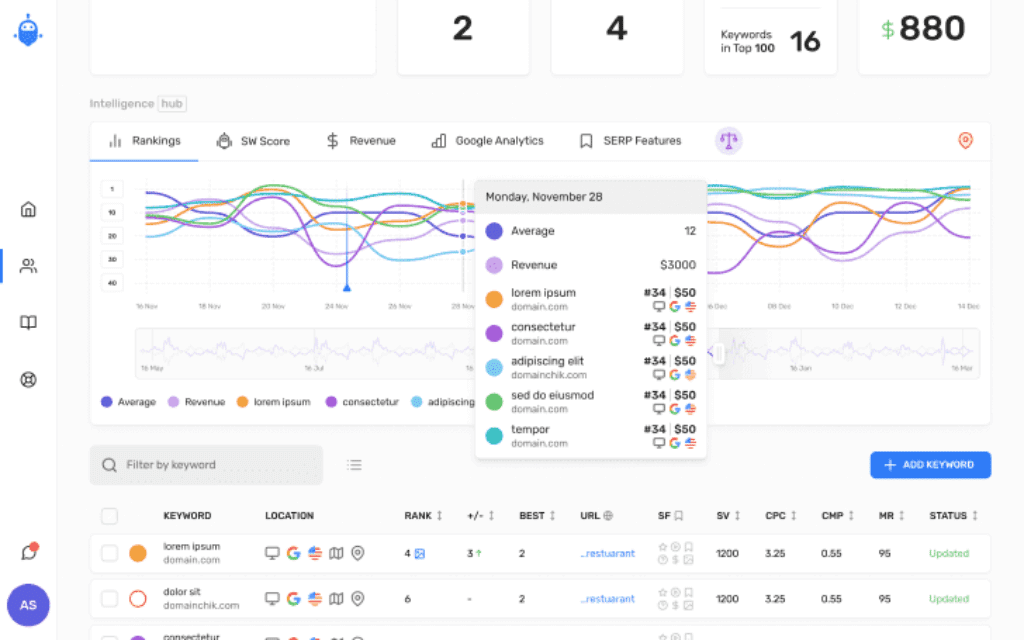We all know the steps to writing great copy, but there are three copywriting tips that you might not have thought of.
If you want to be a great writer, you need to master the art of writing great copy. Copywriting is one of the most important skills of any marketer. Mastering this skill is not easy. We all know the steps to writing great copy, but here are three copywriting tips that you might not have thought of.
Copywriting is the art and science of persuasion through the written word. A copywriter is someone who writes copy, or text, for the purpose of advertising or marketing a product or service. The goal of copywriting is to get people to take a desired action, such as buying a product or signing up for a newsletter.

To do this, copywriters must use persuasive, compelling language that speaks to the reader’s pain points and content marketing that is optimized for search engines (SEO). Good copywriting can make all the difference between an advertiser’s success and failure.
Copywriting is so hard because it’s both an art and a science. A good copywriter needs to be creative, but also understand the psychology of marketing. They need to be able to write copy that is both persuasive and interesting.
It’s not enough to just write good copy – a good copywriter also needs to understand their audience and what will resonate with them. They need to be able to capture the voice of their brand and communicate it in a way that will resonate with their target market.
Copywriting is hard because it requires a lot of skill and knowledge. But when done well, it can be extremely effective in driving sales and engagement.
Content marketing and copywriting are two closely related fields. A copywriter is someone who writes copy, or text, for advertising and marketing materials. This can include website content, brochures, email campaigns, and more.
Content marketing is a strategy that focuses on creating and distributing valuable, relevant, and consistent content to attract and retain a clearly defined audience — and ultimately, to drive profitable customer action.
So, while a copywriter creates the actual text that will be used in marketing materials, a content marketer oversees the overall strategy and plan for how that content will be used to reach and engage customers.
To create a copywriting strategy, you’ll need to consider your audience, your goals, and what you want to say. Start by thinking about who you’re trying to reach and what you want them to do.

Then, craft your message around keywords and phrases that will help you rank in search engines. Keep your copy concise and focus on creating value for your readers.
There are six common copywriting mistakes that can occur when creating content marketing for a product or service.
These include: exaggerating the features or benefits of the offering, using jargon that is not easily understandable, failing to be persuasive, and not providing enough information about the product or service.
Additionally, copywriters can make the mistake of being too sales-oriented in their approach, which can turn off potential customers.
Finally, copywriters may also fail to connect with their target audience on an emotional level, which can prevent the message from resonating.
Copywriting Process
Copywriting is perhaps one of the most important aspects of any business success. Since, as a web content writer, you are working on your own, you can truly concentrate on the content that you are writing for the web.
Copywriting is the art of making a product, a person, a brand or an idea sell by convincing a customer to purchase it or buying into an idea. It is a combination of art and science. It requires knowledge, creativity, inspiration and research.
Copywriting is an interactive process. It involves a lot of research, writing and re-writing, proofreading and editing.
- There are many mistakes that are made while doing the above.
- The following are some of the common mistakes that writers make while writing copy:
- They write a lot of unnecessary text while writing.
- They don’t spend time in researching the product of services being advertised.
- They don’t spend time in identifying the target audience.
- They just write with a lot of confidence for the sake of writing.
- They don’t make the copy relevant to the target audience.
- They don’t write the copy with the intention of providing information and selling the product. They don’t proofread and edit the copy.
Copywriting is the art of persuasion. A good copywriter is able to convince people to take a desired action, whether that’s buying a product, signing up for a service, or any other number of things.
While some may see this as manipulation, it’s really just good marketing. After all, if a company can’t convince you to buy their product, then they’re not going to stay in business for very long.
Copywriting, when done well, is a great way to both sell products and educate consumers. Perhaps the best part about copywriting is that it comes in many shapes and sizes. You can do it for fun (for example, you can use it to sell your talents to people on Fiverr, or to your own followers on social media or by email).
You can also use copywriting to make a side income (for some people, particularly stay-at-home parents, that’s a very valid option). You can even use it to make a full-time living (many of my friends are making a very comfortable living as full-time copywriters, particularly those who work with blogs or companies that sell eBooks).
If you want to become a copywriter, you need to be able to write copy that sells. To do this, you need to understand content marketing and how to create persuasive, compelling, and interesting copy.
One of the best ways to learn how to do this is to study the work of Ogilvy, who is considered one of the fathers of modern advertising.
Sales copy is written to persuade the reader to buy a product or service, while web copy is written to inform the reader and help them make a decision. Both types of copywriting have their own unique challenges, but the main difference is that sales copy needs to be much more persuasive.
Web copy is the on-screen equivalent of sales copy. You know those little blurbs on a search engine results page, or the text that accompanies a picture on a blog? That’s web copy. It’s a very important part of the overall marketing mix, and it may be written or “computed” (more on that later).
A good copywriter knows how to write persuasive, interesting and readable copy. They understand how to capture the attention of the reader and keep them engaged. A good copywriter also knows how to write for the specific audience they are targeting.
First, you must understand the basics of copywriting and the structure of a good copy. A good copy follows a structure of problem, solution, proof and action. Your copy must be clear and relevant to your audience.
The audience should be able to understand what you are trying to say and they should be able to relate it with their needs. And finally, your copy must be direct and should contain information which can be used by the readers.
If you want to write copy that works, you need to understand what your audience wants and needs. You also need to be able to write in a conversational style that engages the reader. As a copywriter, it’s your job to create sales letters and other marketing materials that persuade people to buy what you’re selling.
The best way to learn how to write copy that works is to study successful examples and then practice writing your own. There are many resources available to help you improve your copywriting skills.
1. Be specific (like David Ogilvy)
David Ogilvy is considered one of the fathers of good copywriting. He wrote copy that was direct, persuasive, and to the point. His work helped shape the advertising industry and set a high standard for copywriting. Today, many copywriters strive to emulate his style and achieve the same level of success.
2. Address pain points (like ActiveCampaign)
ActiveCampaign is a great tool for addressing pain points in your copywriting. It allows you to easily create and track custom fields, so you can keep track of what needs to be changed or improved. Additionally, ActiveCampaign’s support team is always available to help you troubleshoot any issues you may have.
Address pain points. Prospective customers will not give a second look if they do not believe that your product is good for them. Convince them that they will be happy and satisfied with your products. Also, know what are the major pain points that people are facing. Create an emotional connection by writing about how your product will solve these problems. You can also write about how your product will not just solve their problems, but also how it will improve their lives.
3. Make people curious (like Eugene Schwartz)
Eugene Schwartz was a copywriter who was known for his ability to make people curious. He would often use techniques like leaving out key information or using unexpected words to pique people’s interest. This made him one of the most successful copywriters of his time.
Copywriting is the art and science of crafting persuasive, compelling, and interesting copy to sell products or services. The best copywriters are able to distill complex concepts into concise, easy-to-understand language that speaks to the reader’s pain points.
There are a number of formulas that can be used to write effective copy, including AIDA (attention, interest, desire, action), PAS (problem, solution, benefit), and FAB (features, advantages, benefits). No matter which formula you use, the goal is always to clearly communicate the value of your product or service in a way that resonates with your audience.
Here is template I would like to share 10 copywriting formulas with you to help you write effective copy for your product and service.
1. Sell the Sizzle, not the Steak__: __Everyone loves the sizzle when it comes to grilling the perfect steak. The same goes for your copy, the more you tantalize your reader’s taste buds, the more they will continue to read.
2. Use Power Words__: __Words like FREE, NEW, NOW, and SUPER describe benefits that people want. Use them in your copy to describe the benefits you are offering.
3. Quantify Your Benefits__: __If you make the benefits you offer “personal” and specific, you will increase the chance of the prospect buying it. 4. Make it Specific__: __Give specific names, dates, places and times to make the offer more real to your reader.
5. Tell a Story__: __Stories are one of the greatest ways to grab a reader’s interest.
6. Be Unique__: __Your copy needs to be unique and original to stand out from the crowd.
7. Use “We”__: __The word “you” makes you appear to be talking to just one person. Use the word “we” to describe yourself, your company and the prospect.
8. Use “You”__: __The word “you” makes your copy more personal and engaging to your
There are a few key things to keep in mind when writing copy for your website, whether you’re a marketer or not.
First and foremost, remember that the goal is to sell your product or service. Keep that in mind as you write great content that will write compelling copy. Good copywriting is all about persuasion, so make sure your copy is convincing and interesting.
Here are some of the website copywriting tips for non-marketers:
– Use one-sentence paragraphs
– Use short sentences to convey your message quickly
– Use bullets and dashes
– Write concisely
– Use NO CAPITAL LETTERS
– Make it personal
– Use power words
– Make sure everything is specific
– Make sure everything is POSITIVE
– Use short paragraphs
– Use short sentences
– Use questions
– Use vivid language
– Use words customers want to read
– Use words customers want to see
– Use words customers want to hear
– Use words customers want to say
– Use words customers want to know
– Use words customers want to see again
Content marketing is all about creating and sharing valuable content to attract and convert prospects into customers, and ultimately, to drive business growth. Copywriting is a key part of content marketing, and good copy can make a big difference to your business.
A well-written piece of copy can increase conversion rates by persuading people to take action, and a good copywriter can help you to edit and polish your content so that it has the maximum impact. If you’re not sure where to start with your content marketing, or if you’re struggling to get results, then consider hiring a copywriter to help you.





